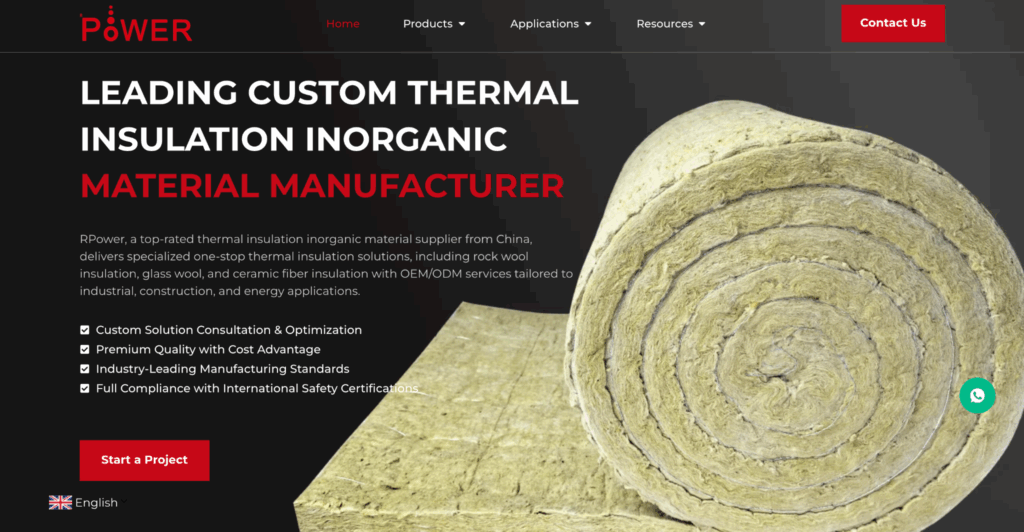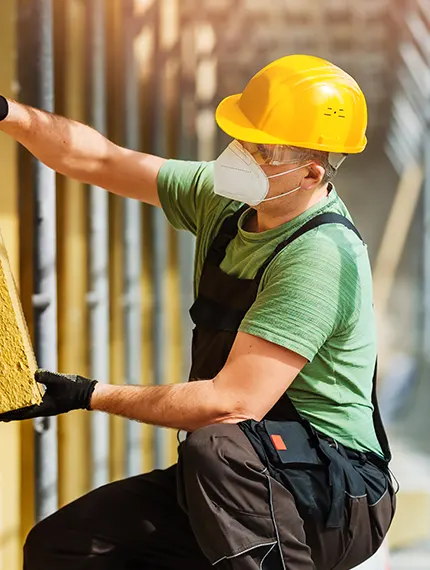When you think about comfort, energy savings, and sustainable living, insulation is often the hidden hero. Whether it’s keeping homes warm in winter or cool in summer, choosing the right thermal insulation material makes all the difference. But with so many options on the market, questions naturally arise: Which material is best for heat insulation? Is rockwool better than spray foam? What is the cheapest thermal insulation?
This article breaks down the science and practicality behind insulation materials, giving you a clear understanding of what is insulation made of, which options provide the best heat insulation, and how to balance performance with cost. Let’s dive in!
Understanding Thermal Insulation

What is Insulation Made Of?
Insulation materials come in different forms, each crafted from unique substances that impact performance, seguridad, and price.
- Fiberglass
Made from spun glass fibers, lightweight yet effective.
Provides solid thermal resistance and is one of the most common household insulation types.
Affordable and easy to install, making it popular for DIY projects.
However, it can irritate the skin and requires protective gear during installation.
- Mineral Wool (Rockwool & Slag Wool)
Produced from natural stone or recycled slag from steel manufacturing.
Excellent for fire resistance, often labeled as a heatproof material.
Naturally resistant to mold and pests, contributing to long-lasting durability.
Slightly more expensive than fiberglass but delivers superior safety benefits.
- Foam Insulation (Spray Foam, PIR, EPS, XPS)
Derived from synthetic polymers such as polyurethane or polystyrene.
Known for high R-values, providing the best heat insulation per inch.
Creates an airtight seal, which helps minimize drafts and energy leaks.
Often costlier upfront but pays off with long-term energy savings.
Which Material is Best for Heat Insulation?

When looking for the best heat insulation, the focus is on thermal resistance (R-value), air-sealing ability, and durability.
Aerogel – The High-Tech Option
- Ultra-light and made from silica, aerogel has one of the highest R-values of any material.
- It’s often used in specialized applications like aerospace or industrial equipment.
- Provides exceptional performance in thin layers, saving space in design.
- Its downside is cost—it remains prohibitively expensive for most residential projects.
Spray Foam – The Airtight Champion
- Expands to fill every nook and cranny, making it ideal for irregular or hard-to-reach areas.
- Offers one of the highest R-values per inch among common building materials.
- Reduces energy bills by preventing both heat loss and air leakage.
- Professional installation is recommended, which adds to the cost.
Rockwool – The Safe and Steady Performer
- Withstands extremely high temperatures, making it a heat proof material.
- Provides consistent insulation performance even in humid conditions.
- Doubles as an excellent soundproofing option, ideal for urban homes.
- Slightly lower R-value per inch than spray foam but excels in safety.
Is Rockwool Better Than Spray Foam?

Both materials excel, but in different ways. Your choice depends on whether you value efficiency, seguridad, or cost.
Why Choose Rockwool?
- Naturally non-combustible, capable of resisting fire up to 1,000°C.
- Long-lasting with minimal risk of shrinkage or degradation.
- Eco-friendly, as it’s often made from recycled industrial by-products.
- Better suited for areas where fire safety is a top priority, such as industrial buildings.
Why Choose Spray Foam?
- Provides superior thermal insulation compared to most alternatives.
- Creates a continuous barrier that reduces both conduction and air infiltration.
- Saves significant energy over time, quickly offsetting its higher installation cost.
- Best for homes where reducing utility bills is a primary concern.
👉 Bottom Line: Spray foam generally delivers better energy efficiency, while rockwool is the safer, fire-resistant choice. Many builders even use them together for maximum benefits.
What is the Cheapest Thermal Insulation?
Budget-conscious homeowners often ask about the most cost-effective insulation without compromising too much on performance.
Fiberglass – The Go-To Option
- Among the cheapest and most widely available insulation types.
- Easy to cut and fit into walls, ceilings, and floors.
- Offers decent R-values for its price, making it a practical solution.
- Requires proper handling due to skin and respiratory irritation risks.
Cellulose – The Eco-Friendly Choice
- Made from recycled newspaper treated with fire-retardant chemicals.
- More affordable than many foam alternatives while being environmentally friendly.
- Great for retrofitting older homes since it can be blown into existing wall cavities.
- Its downside is settling over time, which can slightly reduce effectiveness.
Expanded Polystyrene (EPS) Boards – Budget-Friendly Foam
- Lower-cost foam board compared to XPS or PIR boards.
- Lightweight and easy to cut for different projects.
- Offers moderate R-values but works well for specific applications like under flooring.
- Best used where cost savings matter more than maximum efficiency.
Choosing the Right Material for Your Needs
The “best” insulation really depends on your priorities.
- For Energy Savings: Spray foam or PIR boards provide the best heat insulation.
- For Fire Safety: Rockwool stands out as the most reliable heat proof material.
- For Low Cost: Fiberglass remains the cheapest and most practical option.
- For Sustainability: Cellulose or natural fibers balance performance with eco-friendliness.
About RPower

RPODER is a leading insulation material manufacturer and international trader of Rock Wool, Lana de vidrio, y Fibra Cerámica. Estamos orgullosos de servir a una amplia gama de clientes industriales y comerciales a nivel mundial..
As your “One-Stop Thermal Insulation Solution Professional Provider,” we deliver complete, Soluciones de materiales inorgánicos basadas en valor adaptadas a requisitos complejos de proyectos., incluyendo asistencia con los accesorios necesarios para una instalación perfecta.
With innovation, reliability, and customer-first service at our core, RPOWER is more than a supplier—we’re your trusted partner in building safer, smarter, and more energy-efficient environments worldwide.
Conclusion
Thermal insulation isn’t one-size-fits-all—it’s about finding the right balance for your project. If your priority is maximum energy efficiency, spray foam may be the winner. If you’re concerned about fire resistance, rockwool is unbeatable. And if you’re working on a tight budget, fiberglass or cellulose are excellent options.
The key is understanding what insulation is made of and how different materials perform in real-life conditions. By weighing cost, seguridad, and efficiency, you can confidently choose the solution that provides comfort, protection, and long-term savings for your home or business.
















